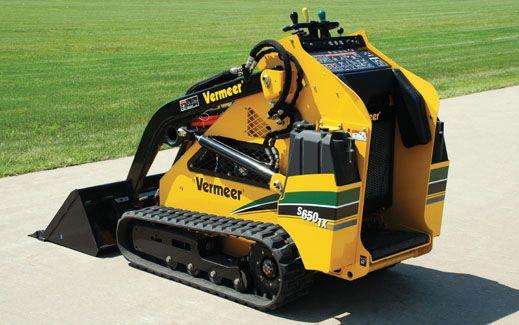Scissor Lift Rental: Safe and Reliable Lifting Solutions
Scissor Lift Rental: Safe and Reliable Lifting Solutions
Blog Article
Maximize Your Budget Plan by Recognizing the Prices Related To Building And Construction Devices Leasings
Comprehending the complete scope of costs associated with building and construction devices services is vital for maximizing your spending plan. What methods can be used to efficiently take care of these costs and make certain a more efficient rental experience?
Introduction of Rental Costs
When thinking about building and construction tools leasings, comprehending the linked expenses is critical for efficient budgeting and job preparation. Rental expenses can differ significantly based on numerous variables, including equipment kind, period of leasing, and location. The preliminary rental cost often reflects the devices's market need and its connected operational abilities, influencing the total cost.
Along with the base rental price, ancillary costs may arise, such as transportation costs, fuel additional charges, and maintenance costs. It is necessary to account for these added costs to properly evaluate the overall cost of renting out tools. Furthermore, the rental period can influence rates; longer leasings may get approved for affordable rates, while temporary leasings may sustain higher day-to-day fees.

Failure of Rental Rates
A detailed understanding of rental rates is important for specialists and task supervisors intending to optimize their budgets. Rental prices for building devices usually consist of numerous components, including base rates, time-based fees, and use costs.
Base prices are the core costs related to the rental of the devices, usually determined by the type and size of the equipment. These rates can vary considerably, influenced by aspects such as tools need, availability, and local market fads. Time-based fees, which may be daily, weekly, or monthly, offer to accommodate various job timelines and rental periods.
In addition, rental rates may consist of usage costs, which apply when devices is utilized beyond a defined threshold, ensuring that the rental firm can represent damage. Seasonal need fluctuations can additionally influence rental prices, with peak building periods normally commanding greater rates.
Additionally, understanding the rental firm's plans regarding maintenance and insurance coverage can provide additional insight into the general expense framework. By assessing these elements, contractors can make enlightened decisions, ensuring the selection of rental tools straightens with both task demands and spending plan constraints.
Extra Charges to Take Into Consideration
Understanding the intricacies of additional charges is vital for professionals to handle their total service expenses effectively. Past the basic rental prices, different auxiliary fees can significantly impact the complete price of tools rental. These costs frequently consist of distribution and pick-up charges, which can vary based on distance and logistics entailed in transferring the devices to and from the work website.
In addition, some rental business may impose fuel surcharges if the equipment is returned with much less fuel than when leased. It is additionally important to understand possible cleaning charges, specifically for specialized tools that calls for thorough upkeep after usage.

Completely examining the rental contract and visit this site right here clearing up these added costs ahead of time can assist specialists avoid unforeseen expenses and ensure that spending plans stay undamaged throughout the project lifecycle.
Repair And Maintenance Costs
Regular upkeep and fixing expenditures are frequently ignored variables that can significantly influence the general price of building and construction devices leasings. When renting tools, it is critical to consider not only the rental costs however also the potential prices related to keeping the machinery in optimum operating condition.
Numerous rental companies consist of standard maintenance as component of the rental arrangement; nonetheless, a lot more extensive repairs or unanticipated break downs can bring about additional expenses. It's important to evaluate the rental contract very carefully to comprehend what maintenance services are covered and what responsibilities fall on the occupant.
Furthermore, equipment that is not well-kept can cause inefficiencies on the work website, potentially creating hold-ups and increasing job expenses. To alleviate these dangers, it is recommended to carry out regular evaluations and preserve open interaction with the rental company concerning any kind of issues that arise throughout use.
Insurance and Liability Expenses
Insurance policy and obligation prices are critical elements that can dramatically affect the overall cost of building and construction tools services (aerial lift rental). These prices guarantee that both the rental firm and the client are protected from potential economic losses emerging from mishaps, damage, or burglary my explanation throughout the rental duration

In addition, clients must know any deductibles or exclusions in the insurance coverage, as these can affect potential out-of-pocket costs. Recognizing the conditions of any kind of insurance policy coverage is essential to stay clear of unforeseen costs. Eventually, budgeting for insurance and obligation expenses can aid ensure a smoother rental experience and shield versus financial dangers associated with construction projects.
Verdict
In conclusion, an extensive understanding of the expenses associated with construction equipment services is essential for reliable budget monitoring. Inevitably, educated decision-making regarding tools services adds to the overall success of construction endeavors.
Rental expenses can vary substantially based on numerous aspects, consisting of tools type, period of service, and location (dozer rental). The rental period can affect pricing; longer services may certify for affordable rates, while temporary rentals may incur higher everyday costs
By carrying out complete study and engaging with reliable rental business, professionals can successfully navigate the complexities of rental pricing, inevitably optimizing their monetary sources.
Beyond the standard rental rates, various additional costs can substantially influence the total cost of tools leasing. Rental firms commonly supply liability insurance policy that covers injuries to 3rd events or damage to home, while tools damage insurance policy can cover the price of repair work or replacement if the rented out equipment is damaged.
Report this page